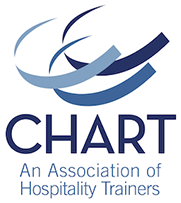How Net Promoter Score can Help Improve Staff Training
April 16, 2015 | 3113 Views
Net Promoter Score (NPS) is a widely recognized standard in benchmarking “intent to recommend” and an effective way to evaluate guest feedback and engage in meaningful dialogue about areas of improvement. Have you ever considered taking NPS into the evaluation of your training? If not, I suggest that you do. This simple step has the ability to better align training with business objectives and give employees a voice in creating meaningful improvements in training.
You know the snapshot. Trainers conduct a class and hand out “smile sheet” evaluations to trainees at the end. These do little more than evaluate how employees feel coming out of the room, or make the trainers feel good (or bad) about themselves. Yes, we are collecting feedback, but rarely does it involve honest and substantive feedback that we actually use for Level 1 change.
From a technical perspective, taking NPS into training evaluations is pretty straightforward and involves changing your evaluations to a 10-point Likert scale, including “intent to recommend,” and adding some new open-ended questions designed to identify strengths and weaknesses. The organizational perspective, however, goes beyond the straightforward and includes many benefits:
- Speaking the language of business. When trainers apply the NPS model to training evaluations, they can frame results into numbers executives immediately understand. For instance, when the training department says, “Our department’s NPS for this year is 68 percent,” a translator is no longer necessary and we become better business partners.
- Aligning training NPS with guest NPS. While we are eager to give guests a voice when it comes to influencing our key result areas and service strategy, are we as eager to give our employees a voice in shaping our training programs and impacting the delivery of that experience? When we give employees a voice and align training NPS metrics with guest NPS metrics, we can make real improvements that will yield better results from our training.
- Evaluating the effectiveness of trainers and training materials. Employee engagement with what is being taught is directly correlated to the skills of the trainer and how engaging the material is. At Best Western, recent evaluations identified our participant workbooks and PowerPoint presentations as areas needing attention. We allocated resources for improvement and trainee satisfaction has increased dramatically. Likewise, we can work with individual trainers in the training department to identify topic areas, training capabilities and delivery methods to improve.
- Evaluating the effectiveness of individual training programs. Drilling down through individual programs, such as front desk, housekeeping and maintenance, with “intent to recommend” provides a deeper understanding of the perception of the course. It also gives an indication of the transference of the learning concepts to on-the-job applications.
- Celebrating successes. What gets measured gets celebrated. Focusing on one score helps us all work together toward the common goal of improvement and gives us a reason to celebrate when we do.
Aligning training metrics with the organization’s overall business metrics is a simple, but solid, practice that makes a difference. If you give employees a voice, listen to them, tailor your training and deliver that experience, you will perform better than the competition. Here’s to your new and improved NPS.
Colby Hutchinson is a hospitality management trainer with Best Western International and a member of the Council of Hotel and Restaurant Trainers.
This blog originally appeared as an article in the April 7, 2015 issue of HotelManagement.net http://www.hotelmanagementdigital.com/article/Training+Trends/1965605/251377/article.html


